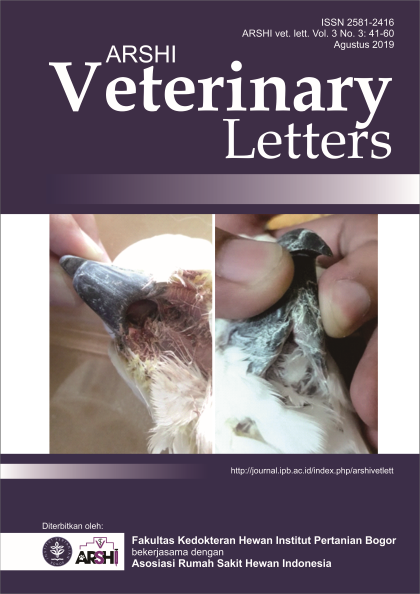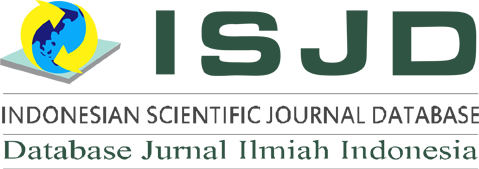Teknik koleksi dan analisa cairan serebrospinal pada hewan kecil
Abstrak
Cairan serebrospinal (Cerebrospinal Fluid/CSF) terdapat pada otak dan sumsum tulang belakang yang dilapisi oleh lapisan meninges. Penyakit yang terjadi pada daerah ini dapat menyebabkan perubahan karakteristik pada cairan cerebrospinal. Analisa CSF merupakan bagian dari evaluasi diagnostik hewan yang memiliki indikasi adanya gangguan neurologik terutama seperti meningitis, ensefalitis dan myelitis yang memengaruhi sistem syaraf pusat, meninges dan sekitarnya, serta akar syaraf. Cairan serebrospinal dapat dikoleksi dengan metode atlanto-occipital cistern puncture dan lumbar puncture. Hewan diberikan anastesi general dan dibaringkan sternal atau lateral recumbency untuk memudahkan proses koleksi CSF. Cairan serebrospinal dapat di analisa melalui tampilan cairan, biokimia dan sitologi. Pengetahuan mengenahi teknik pengambilan CSF diperlukan untuk meminimalkan resiko cedera syaraf dan hal yang berkaitan dengan metodenya secara singkat dibahas dalam tulisan ini.
Unduh
Referensi
Lowrie M, James A. 2011. Cerebrospinal fluid: Analysis and interpre-tation in small animals. In Practice.33 (2):78-85.
Scott HW. 1997. Clinical technique spinal puncture. Waltham Focus.7 (2): 10-12
Seguin B. 2001. Cerebrospinal fluid collection and analysis in dogs and cats. Waltham Focus11(4): 26-30.
Copyright (c) 2019 CC-BY-SA

This work is licensed under a Creative Commons Attribution-ShareAlike 4.0 International License.
Authors who publish with this journal agree to the following terms:
1. Authors retain copyright and grant the journal right of first publication with the work simultaneously licensed under a Creative Commons Attribution License that allows others to share the work with an acknowledgement of the work's authorship and initial publication in this journal.
2. Authors are able to enter into separate, additional contractual arrangements for the non-exclusive distribution of the journal's published version of the work (e.g., post it to an institutional repository or publish it in a book), with an acknowledgement of its initial publication in this journal.
3. Authors are permitted and encouraged to post their work online (e.g., in institutional repositories or on their website) prior to and during the submission process, as it can lead to productive exchanges, as well as earlier and greater citation of published work (See The Effect of Open Access).












